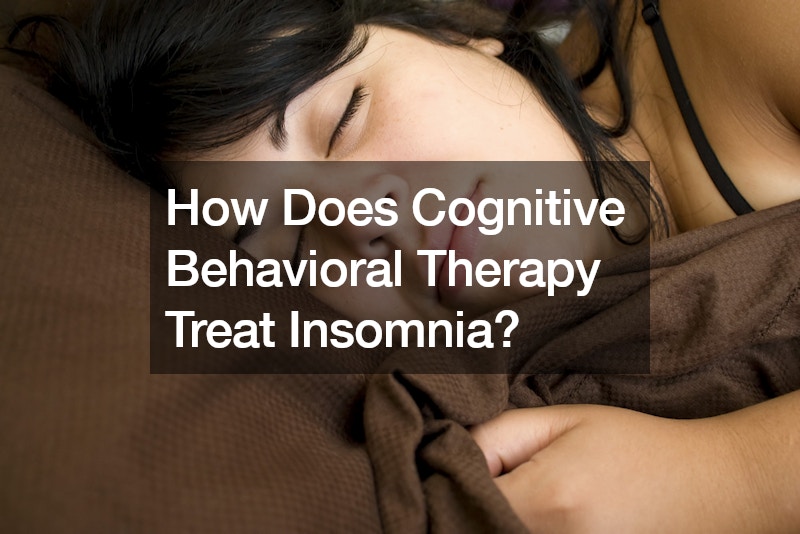Insomnia, characterized by difficulty falling or staying asleep, affects millions of people worldwide, leading to significant physical and mental health issues. Cognitive Behavioral Therapy for Insomnia (CBT-I) is a highly effective, non-pharmacological treatment that addresses the underlying thoughts and behaviors contributing to sleep problems. Here’s how CBT-I can help treat insomnia.
Understanding Cognitive Behavioral Therapy for Insomnia
Cognitive Behavioral Therapy for Insomnia (CBT-I) is a structured program that helps individuals identify and replace thoughts and behaviors that cause or worsen sleep problems. Unlike medications, which often only provide short-term relief, CBT-I aims to address the root causes of insomnia, offering long-lasting improvements.
Components of CBT-I
CBT-I involves several components, each targeting different aspects of insomnia. These components are designed to work together to improve sleep quality and overall well-being.
Cognitive Restructuring
Cognitive restructuring focuses on identifying and changing negative thoughts and beliefs about sleep. People with insomnia often develop anxiety and negative associations with sleep, such as fearing they won’t be able to fall asleep. CBT-I helps individuals challenge these thoughts and replace them with more positive, realistic ones, reducing anxiety and promoting better sleep.
Sleep Hygiene Education
Sleep hygiene education involves teaching individuals about healthy sleep practices. This includes maintaining a regular sleep schedule, creating a comfortable sleep environment, and avoiding stimulants like caffeine and electronics before bedtime. Good sleep hygiene sets the foundation for better sleep and supports other CBT-I strategies.
Stimulus Control
Stimulus control aims to associate the bed and bedroom with sleep, rather than wakefulness. Individuals are advised to go to bed only when sleepy, use the bed only for sleep and sex, and get out of bed if they can’t fall asleep within 20 minutes. This helps retrain the brain to link the bed with sleep, reducing the frustration and anxiety often associated with insomnia.
Sleep Restriction
Sleep restriction involves limiting the amount of time spent in bed to the actual amount of sleep a person typically gets. Initially, this may mean reducing time in bed, which can increase sleep drive and consolidate sleep. Gradually, the time in bed is increased as sleep efficiency improves, leading to more restful and uninterrupted sleep.
Relaxation Techniques
Relaxation techniques, such as progressive muscle relaxation, deep breathing exercises, and mindfulness meditation, are often incorporated into CBT-I. These techniques help reduce physical tension and mental stress, making it easier to fall asleep and stay asleep.
Effectiveness of CBT-I

Research has shown that CBT-I is highly effective in treating insomnia. Studies indicate that 70-80% of individuals undergoing CBT-I experience significant improvements in sleep quality, with many achieving normal sleep patterns. Moreover, the benefits of CBT-I tend to be long-lasting, with improvements often maintained for months or even years after treatment.
CBT-I offers lasting relief without the side effects associated with sleep medications. If you’re struggling with insomnia, consulting a healthcare professional about CBT-I could be the first step towards better sleep and improved quality of life.

